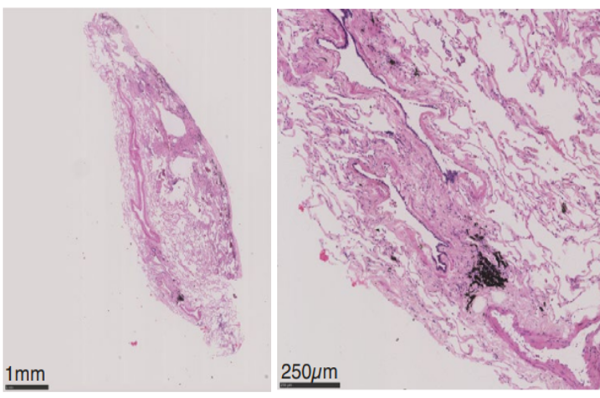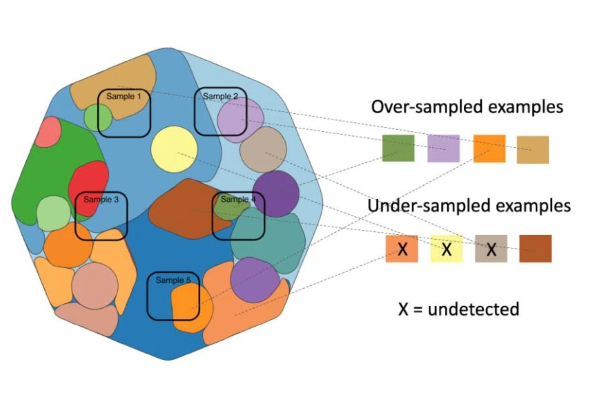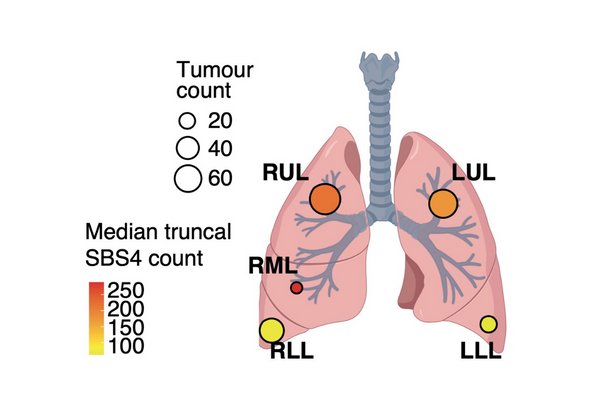| Dear Voornaam
TRACERx is a 14 million programme funded by Cancer Research UK which takes practical steps to make precision medicine for lung cancer patients a reality.
It has involved over 800 patients and 250 researchers and collaborators around the world, working together to understand the genetic complexity of lung cancers, how tumours evolve and why treatments stop working.
Thanks to nine years of painstaking research from those researchers exemplifying team science at its best Im delighted to congratulate them on their latest series of findings published in eight papers in Nature and Nature Medicine.
These new insights give vital clues into how ancient viral DNA inherited from our ancestors thousands of years ago might impact how tumours grow in patients today, and how features of cancer cells could be behind the causes of cachexia.
The sheer amount of data the project has collated means these latest findings add to the 18 high-impact papers already published, a further 100+ publications based on TRACERx data, and over 100 collaborations. The next steps will see the team continue to build on these learnings to advance therapeutic strategies for patients around the world.
Were marking this significant milestone with a dedicated newsletter, showcasing the latest publications and related content.
And if youre preparing a Cancer Research UK-funded research paper for publication, be sure to tell us about it on the link below. Our comms teams would love to hear from you.
Kind regards,
Iain Foulkes
Executive Director Research & Innovation
CEO Cancer Research Horizons
Cancer Research UK |
|
|---|
|
|---|
|
|
UNDERSTANDING CACHEXIA Othman Al-Sawaf et al explore the association between body composition and body weight and survival, showing that low body weight at diagnosis predicts poor lung cancer outcome. Exploring tumour genomics, transcriptomics and plasma proteomics for potential mediators of cachexia, they discovered an association between circulating GDF15 with loss of adipose tissue, skeletal muscle tissue and body weight. |
|
|---|
|
|---|
|
|
 AIR POLLUTION AND LUNG CANCER William Hill, Emilia Lim, Clare Weeden et al investigated how air pollutants promote lung cancer in people who have never smoked. Integrating epidemiology, pre-clinical models and ultradeep mutational profiling of clinical cohorts they found evidence that air pollutants trigger expansion of pre-existing mutant cells in normal tissue to start cancer development. |
|
|---|
|  ctDNA AND LUNG CANCER Christopher Abbosh et al developed circulating tumour DNA (ctDNA) tracking methods which showed preoperative ctDNA indicated poor prognosis for lung cancer patients, and higher risk for cancer to spread outside the lungs. They developed a bioinformatic tool for non-invasive tracking of tumour evolution at low ctDNA levels that identified patients with polyclonal metastatic dissemination, which was associated with poor clinical outcome. |
|
|---|
|
|---|
|
|
EVOLUTION OF METASTASES Maise Al Bakir, Ariana Huebner et al explore when, why and how metastases occur in individual cancer patients. They find that a dominant subclone within the primary tumour usually seeds metastasis and polyclonal seeding, where several different sub-populations in the primary tumour contribute to the metastasis, is more likely to result in metastases outside the lung. |
|
|---|
|
|---|
|
|
GENOMIC-TRANSCRIPTOMIC EVOLUTION Carlos Martnez-Ruiz, James Black and authors explore gene expression, how it impacts the genetic diversity of each tumour and how it affects the prognosis for each patient. This work demonstrates that to understand how a tumour changes and evolves over time we need to consider both genetic and non-genetic evolution. |
|
|---|
|
|---|
|
|
 EVOLUTION OF LUNG CANCER Alexander Frankell et al identify multiple genetic features related to intra-tumour heterogeneity in non-small cell lung cancer which may indicate if a patient is likely to relapse after surgery. |
|
|---|
|  MORPHOLOGY OF LUNG CANCER Takahiro Karasaki and David Moore et al explore the relationship between lung adenocarcinoma morphology, underlying tumour evolution and disease progression. Tumours with predominantly high-grade patterns showed increased genome instability and were linked to poorer prognosis for patients, with specific patterns being linked to site of recurrence. |
|
|---|
|
|---|
|
|
ENDOGENOUS RETROVIRUSES & IMMUNOTHERAPY The authors Kevin Ng, Jesse Boumelha and Katey Enfield reveal that endogenous retroviruses may be reactivated in cancer cells and that the degree of reactivation strongly correlates with the rate at which tumours grow and the size of immune response they elicit in cancer patients. |
|
|---|
|
|---|
|
|
| About to publish your research? |
|---|
| |
|---|
|
|
| | | Charles Swanton went to the COP26 to talk about the links between pollution and lung cancer in never smokers |
|
|---|
|
|---|
| | | Mariam Jamal-Hanjani talks about the dawn of TRACERx and the international effort to understand the biology behind cancer cachexia with Cancer Grand Challenges |
|
|---|
|
|---|
| | | For more context on cachexia, find out how chemotherapy causes cachexia from our chief scientist Professor Ketan Patel |
|
|---|
|
|---|
| | | Hear Charles talk about why lung cancer is a disease worthy of investment and research, why there's still a stigma around the disease and his vision for the future of TRACERx EVO |
|
|---|
|
|---|
| | | Chris Bailey explains how ecDNA challenges models of tumour evolution and drug resistance |
|
|---|
|
|---|
|
|
WHAT DID YOU THINK OF THIS EMAIL? We're always looking for ways to improve. Please give us your feedback by clicking below and leaving a comment. |
|
|---|
|
|---|
|
|
| Been forwarded this email?
Subscribe to our newsletter to stay up-to-date. |
|---|
| |
|---|
|
|
|